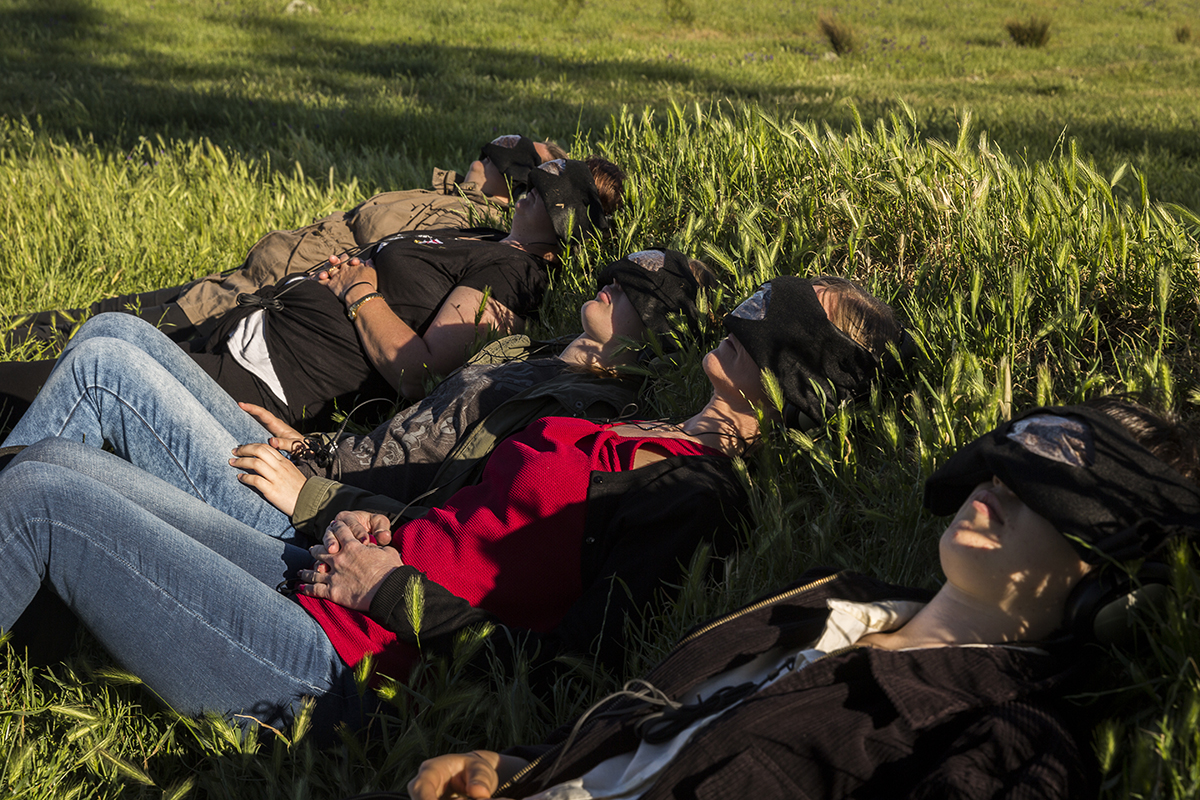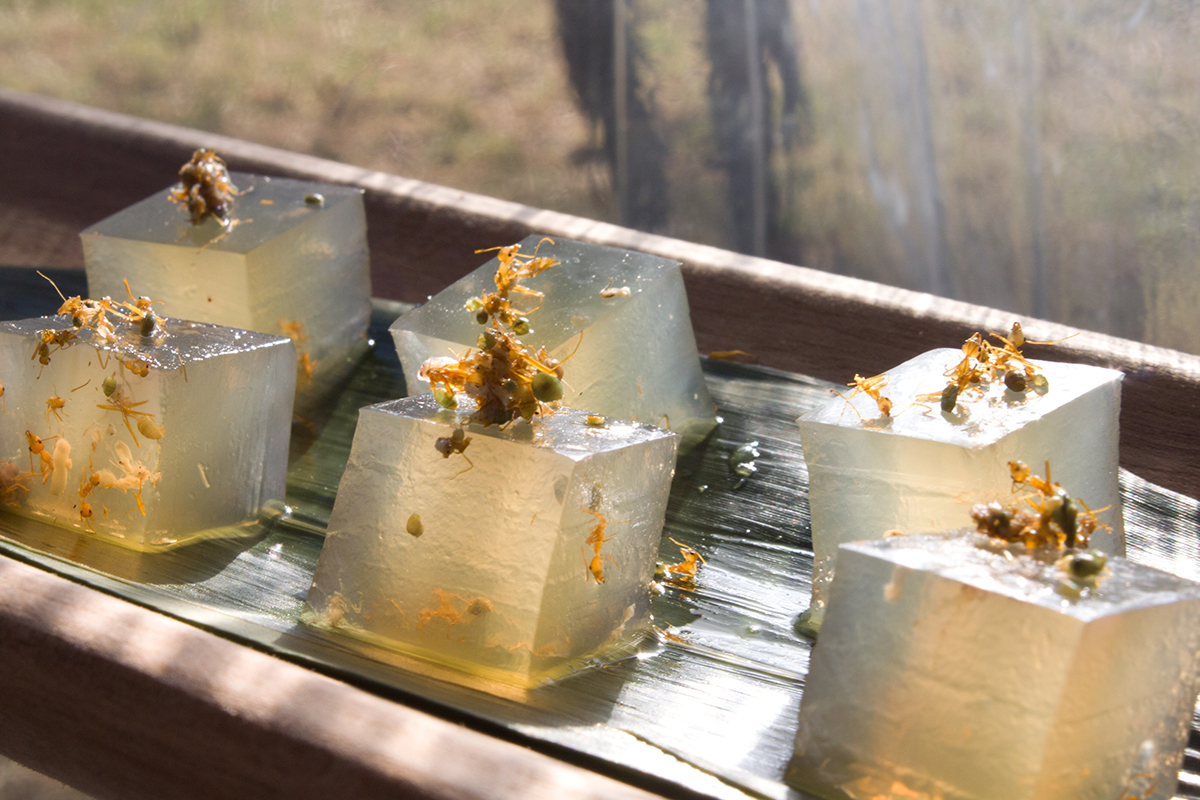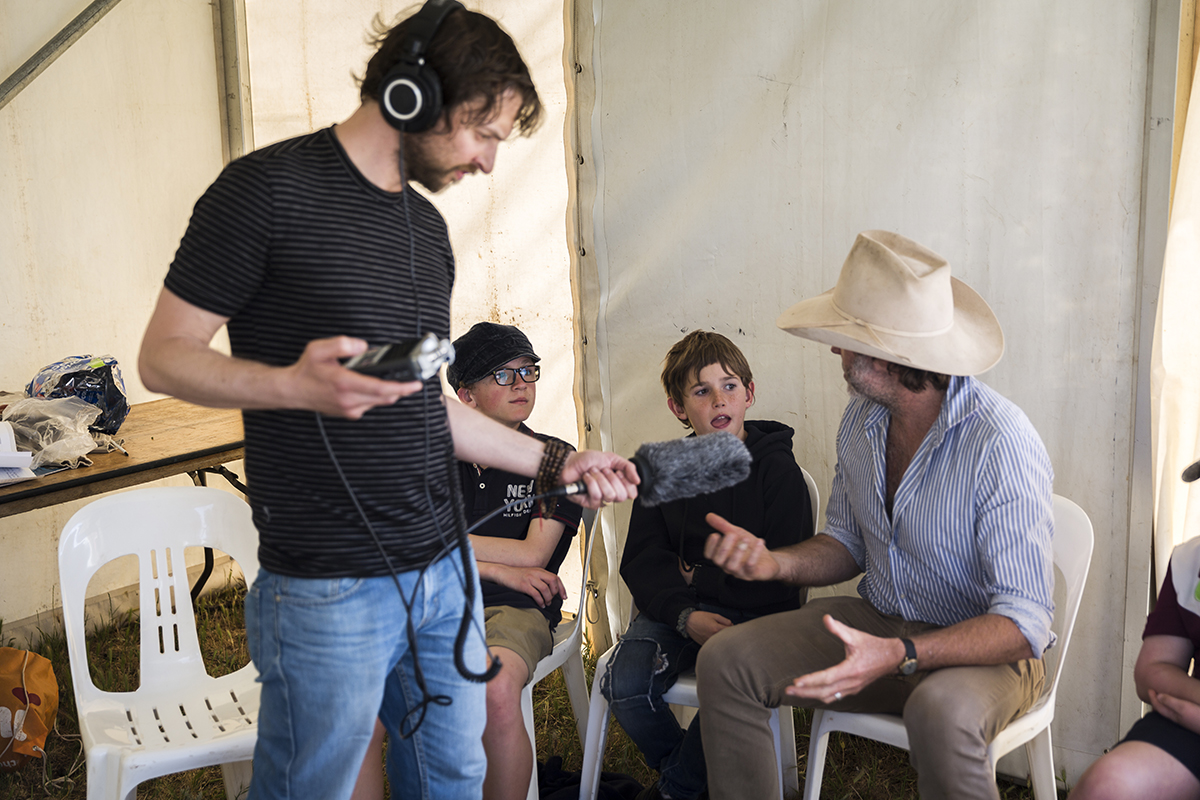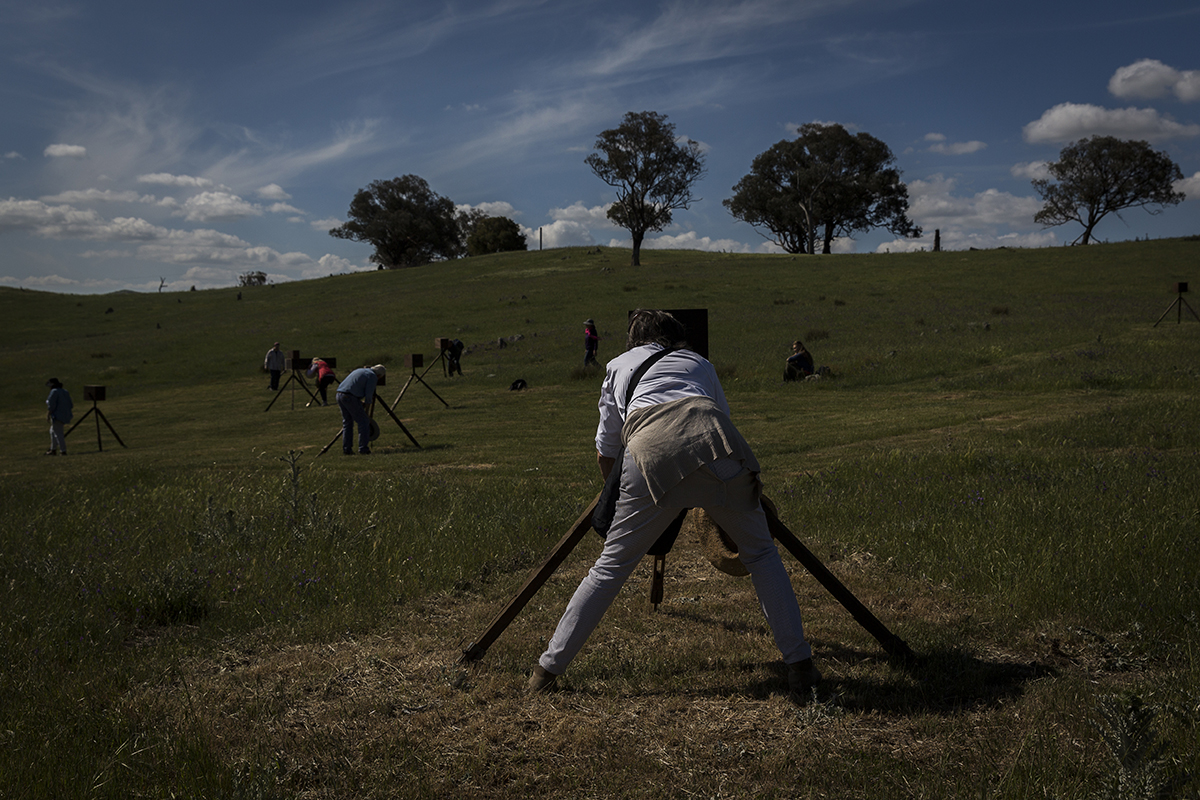
Wired Open Day Festival’s agri-cultural magic
Something in the lone, three-legged photo-boxes straddling the landscape speaks of dystopian invasion: the spindly War of the Worlds tripods landed here in a remote paddock as forerunners of a semi-remembered technology, an unravelled history of the photograph. The farmland gullies outside Cootamundra have been abruptly colonised by the unknown, the weird and the naggingly unnamed familiar.
On Saturday 21 October, the Wired Lab artist-led organisation, as part of its platform for evolving interdisciplinary art practices in rural Australia, staged the agri(culture) project as “a participatory landscape-scale and omni-sensorial exploration of rural and agricultural phenomena with regional and metropolitan audiences.” Twelve interdisciplinary Australian and international artists and collectives presented creative outcomes, with the viewer/participant trekking into and through site-specific landscape installations, from early afternoon until 11pm — the art-walker on an experiential tour.

Installation view, Green Ant Gin Jellies by Soon Lee Low, Insecta Delecta by Cat Jones for The Wired Lab, 2017, photo courtesy the artist
The experience of lying flat, pressed to the earth, on grassy hillocks teeming with insect forms, is the core of Julie Vulcan’s DARKbody, an immersion chamber with headphones and sonorous, wry narrative of descent into sleeping pits in the earth. It is a contemplative sound-dive into a recited tale of “humans sandwiched between literal darkness above and beneath us” — of scotobiology (the biology of darkness) as affective encounter with non-human agency. It is a profoundly meditative slumbering encounter with grass, earth and a slipping away into myriad tiny deaths of darkness within the earth hidden beneath us.
Several other site works are part of the late afternoon land-walk, from Cat Jones’ Insecta Delecta — gourmet helpings of edible insects, served up by a chef to walkers thrown into a sudden field-based Blade Runner future of insectivorous farming — to the rampant honesty of Kids vs Art’s podcast critiques of the varied artworks [hear Kids vs Art’s vivid response to Insecta Delacta, shared with a local farmer. Eds]. I had this firmly in mind as a well-intended community art means of engaging kids, an arrogance of mine rapidly dispelled by not only the sheer clarity and insight involved but by the kids’ astute interviewing of UK sound artist Chris Watson, among others. Here was art shoved off its white plinth and viewed through a child’s lens, a finely attuned crapometer, asking ‘Why are you doing this, and why should we give it value?’

Kids Vs Art, Wired Open Day, presented by Field Theory, photo Joshua Thomas courtesy The Wired Lab
I was most taken by Beggan Beggan (created by NSW regional artists The Ronalds, David Burraston and Wired Lab’s Sarah Last), how it constructed and navigated a traditional shearing shed viewed on blank, undulating land through the simple, stolid device of viewing boxes seemingly left idle in a paddock. The tiny dioramas seen in the boxes ‘mapped out’ the spaces and evoked a sense of a ghost-shed, resonating strongly and endemically with the land and place preoccupations of Wired Lab’s focus on agri-culture. Even with the lineage of an eroded technology faded into history, the boxes reminded me of speaker-stands littered around an abandoned drive-in theatre, awaiting some invitation to rise from sleep. At once inert and motionless, these are brown bones of time lost in history’s sepia photobook pages and the disappearing wash of darkroom trays of arcane liquids.
The installation made dramatic use of the spectral histories of landscape to evoke what once was likely roped off with now invisible builder’s string, charting the dormant, heritage-listed shearing shed on Beggan Beggan station near Jugiong. Each almost childlike diorama with its squat, singular scope of one curved viewing lens in a wooden box on legs akimbo is the simplest puppet-show of perception; yet there is a granular, modulated tone to the images that requires the viewer to walk, and tilt and reconstruct in both mind’s eye and memory the spaces and assembled views — the walker in the paddock rebuilding The Ronalds’ images back into the light. The installation is consciously low-tech. According to Shannon Ronald, “We wanted the experience to be as immersive as possible. We designed each of the boxes with peephole lenses so your vision is completely encapsulated by the scene inside the box… We liked the sensory experience of looking around inside the box and straining to see the detail that each vignette presented.” And it is this series of frosted plays, frozen in time as tiny, self-contained vignettes that are so elementally reconstructive of walking through the landscape to pace out the presence of its use, its shearing history, as the viewer/participant becomes an active bricoleur, reassembling footfalls of the past.

Beggan Beggan installation, The Ronalds, David Burraston and Sarah Last, photo Joshua Thomas courtesy The Wired Lab
David Burraston’s sound sensibilities glide in and under most aspects of the sensory experience of this depiction of the recreated shed in Beggan Beggan — albeit as thin echoes emerging from partially concealed speakers near the boxes or in his soaring co-composition at night with Chris Watson. Watson’s Beyond Ol Tokai multi-channel sound recording is of a herd of African elephants in the Olodare marshes of Kenya. He specialises in natural history and location sound recording but “documentary” would be a limited categorising of his post-production ability to create engulfing soundscapes which not only sample, but echo the presence of animals as overheard monoliths encircling us. In the shivering, jet-black night, we unwittingly join a herd of African elephants lumbering across blackened marshlands.
There is a forlorn edge to the surrounding sounds of elephants snorting, rolling or careening weightily through the brush, coming at the listener from all directions on a stony hill, overseen in the deep dark by a bright roof of stars. We stand rigid on the sloping farmland, alongside cut logs, huddled against the night’s rapidly creeping cold, caught and dipped in liquid sound, a medium usually thought of as background rather than narrative driver. It is the late-night bookend to the earlier visual field full of wooden camera-boxes. As a biting frost begins to cut across the still, darkened treetops, we are left with the curious thought-pictures prompted by Chris Watson’s sounds of looming elephants in an imagined Kenya — beneath an all spangled sky.
–
Read an interview about the Wired Open Day Festival with Wired Lab, Artistic Director Sarah Last here.
Wired Lab, Wired Open Day Festival, near Cootamundra, NSW, 21 Oct
Dr Neill Overton is a Senior Lecturer in Art History and Visual Culture at Charles Sturt University, Wagga Wagga. He has worked extensively as a newspaper illustrator, exhibiting artist, art reviewer and novelist. His critical essays address the relationship between contemporary regional and urban art.
Top image credit: Participants experiencing DARKBODY, Julie Vulcan, agri(culture) project, photo Joshua Thomas courtesy The Wired Lab






